Alternative names Soya milk Invented c. 1365 Protein 2.86 g | Place of origin China Food energy
(per 100 g serving) 33 kcal (138 kJ) | |
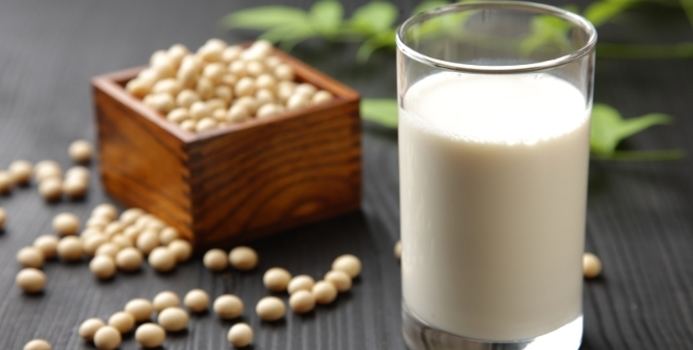 | ||
Nutritional value
(per 100 g serving) Protein
2.86 g
Fat
1.61 g
Carbohydrate
1.74 g Similar Soybean, Milk, Tofu, Cow's milk, Almond milk | ||
Soy milk (also spelled soymilk) is a plant based drink produced by soaking dried soybeans and grinding them in water.
Contents
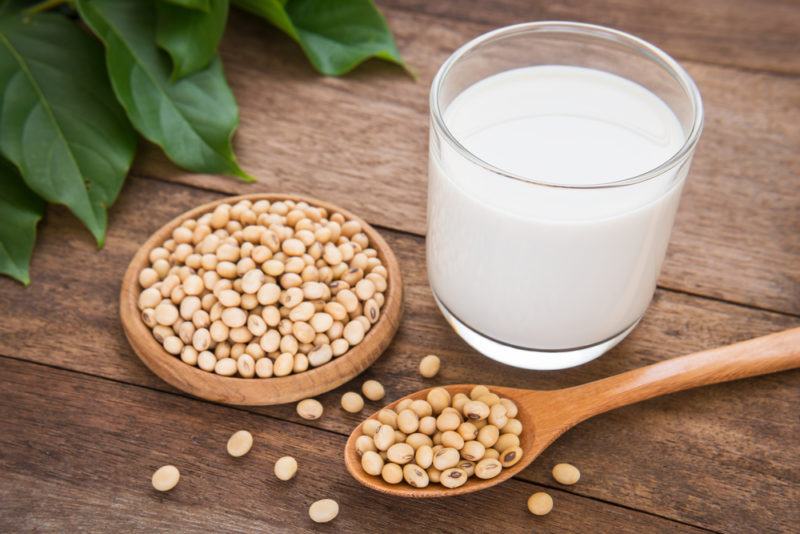
A traditional staple of East Asian cuisine, soy milk is a stable emulsion of oil, water and protein. Soy milk can be produced at home using a soy milk machine. It is often used as a substitute for dairy milk.
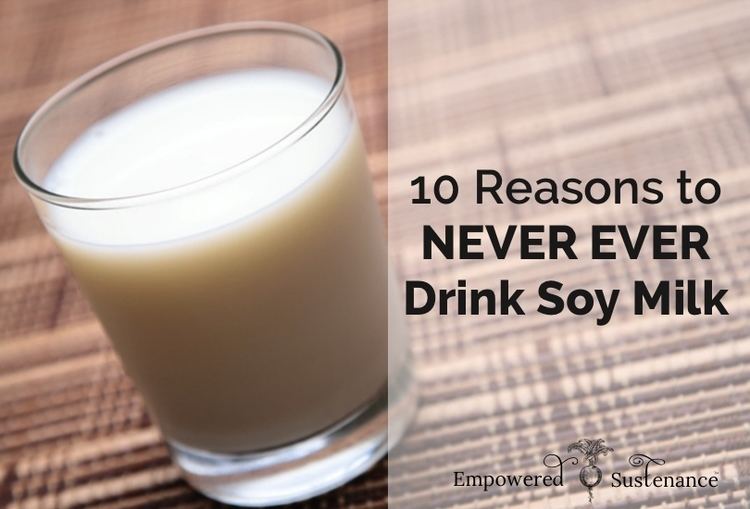
History
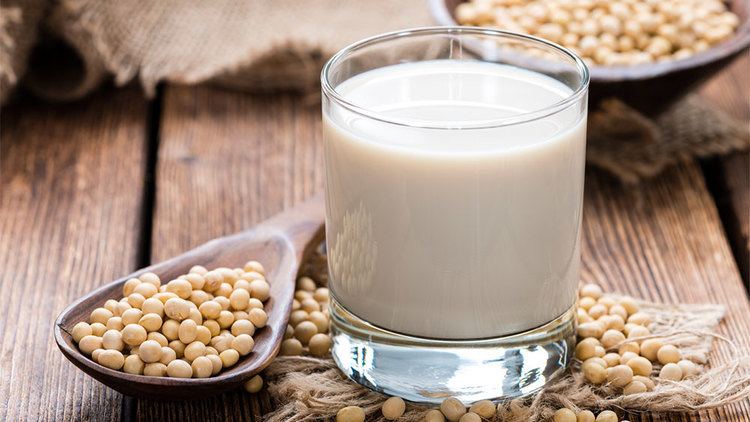
Soy milk (doujiang) originated in China, probably during the early Han dynasty (202 BCE to 9 CE), after the rotary millstone was introduced and became widely used to grind wheat. It did not become widely used in China until the 1800s, when it was discovered that extended heating made it taste better and easier to digest.

Soy milk was introduced to the US market by Vitasoy in 1979; the first domestic manufacturer of soy milk was Sunrich Food Group, which introduced its products in 1985.
Name variations
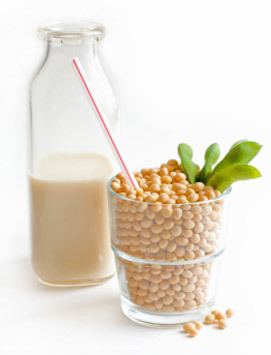
There is a certain amount of confusion prevalent when it comes to beverages named soy beverage, soy drink or soy milk respectively. This is caused by several factors:
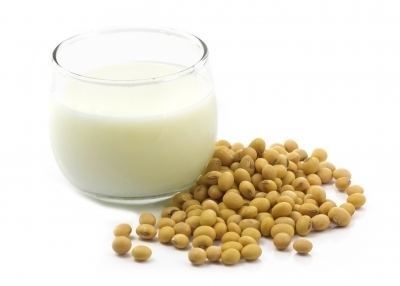
Nutrition
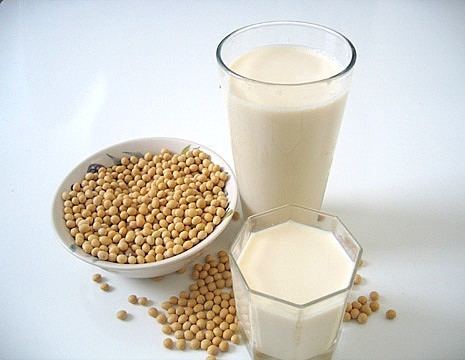
In a 100 ml (gram, g) serving, one commercial, nutrient-fortified brand of soy milk provides 80 calories from 4 g of carbohydrates, including 1 g of sugar, 4 g of fat and 7 g of protein. This processed soy milk contains appreciable levels of vitamin A, B vitamins and vitamin D in a range of 10 to 45% of the Daily Value, with calcium and magnesium also in significant content.
Taste
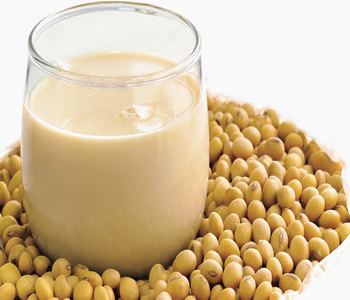
Soy milk flavor quality differs according to the cultivar of soybean. Soy milk aroma, smoothness and thickness in the mouth, color and creamy appearance are considered desirable qualities, with favored sensory attributes associating with protein content, soluble solids, and oil content.
In a study of taste attributes, soy milk flavored with vanilla or sweet aromatic flavors and higher viscosity was preferred by most subjects, while dislike factors were bean or broth flavors. In another study, 54% of participants preferred the taste of cow's milk, while 27% preferred soy milk, with sweetness and cream qualities identified as important flavor preferences.
Preparation
Soy milk is made from whole soybeans or full-fat soy flour. The dry beans are soaked in water overnight or for a minimum of 3 hours or more depending on the temperature of the water. The rehydrated beans then undergo wet grinding with enough added water to give the desired solids content to the final product which has a protein content of 1–4%, depending on the method of production. The ratio of water to beans on a weight basis is 5:1 for traditional soy milk or 20:1 for soy beverages. The resulting slurry or purée is brought to a boil in order to improve its taste properties by heat inactivating soybean trypsin inhibitor, improve its flavor, and to sterilize the product. Heating at or near the boiling point is continued for a period of time, 15–20 minutes, followed by the removal of insoluble residues (soy pulp fiber or okara) by filtration.
Processing requires the use of an anti-foaming agent or natural defoamer during the boiling step. Bringing filtered soy milk to a boil avoids the problem of foaming. It is generally opaque, white or off-white in color, and approximately the same consistency as cow's milk.
Soy milk is also used to manufacture soy yogurt and soy ice cream.
Cooking
Soy milk is found in many vegan and vegetarian food products and can be used as a replacement for cow's milk in many recipes.
"Sweet" and "salty" soy milk are both traditional Chinese breakfast foods, served either hot or cold, usually accompanied by breads like mantou (steamed rolls), youtiao (deep-fried dough), and shaobing (sesame flatbread). The soy beverage is typically sweetened by adding cane sugar or, sometimes, simple syrup. "Salty" soy milk is made with a combination of chopped pickled mustard greens, dried shrimp and, for curdling, vinegar, garnished with youtiao croutons, chopped scallion (spring onions), cilantro (coriander), meat floss (肉鬆; ròusōng), or shallot as well as sesame oil, soy sauce, chili oil or salt to taste. Soy milk is used in many kinds of Japanese cuisine, such as in making yuba as well as sometimes a base soup for nabemono. In Korean cuisine, soy milk is used as a soup for making kongguksu, cold noodle soup eaten mostly in summer.
Soy milk is also used in making soy yogurt, soy cream, soy kefir and soy based cheese analogues.
Ecological impact
Using soybeans to make milk instead of raising cows may be ecologically advantageous. Cows require much more energy in order to produce milk, since the farmer must feed the animal, which can consume up to 24 kilograms (53 lb) of food in dry matter basis and 90 to 180 litres (24 to 48 US gal) of water a day, producing an average of 40 kilograms (88 lb) of milk a day. Legumes, including the soybean plant, also replenish the nitrogen content of the soil in which they are grown.
The cultivation of soybeans in South America has been cited as a cause of deforestation and a range of other large-scale environmental harm. The majority of soybean cultivation worldwide, especially in South America where cattle farming is widespread, is intended for livestock fodder rather than soy milk production.
